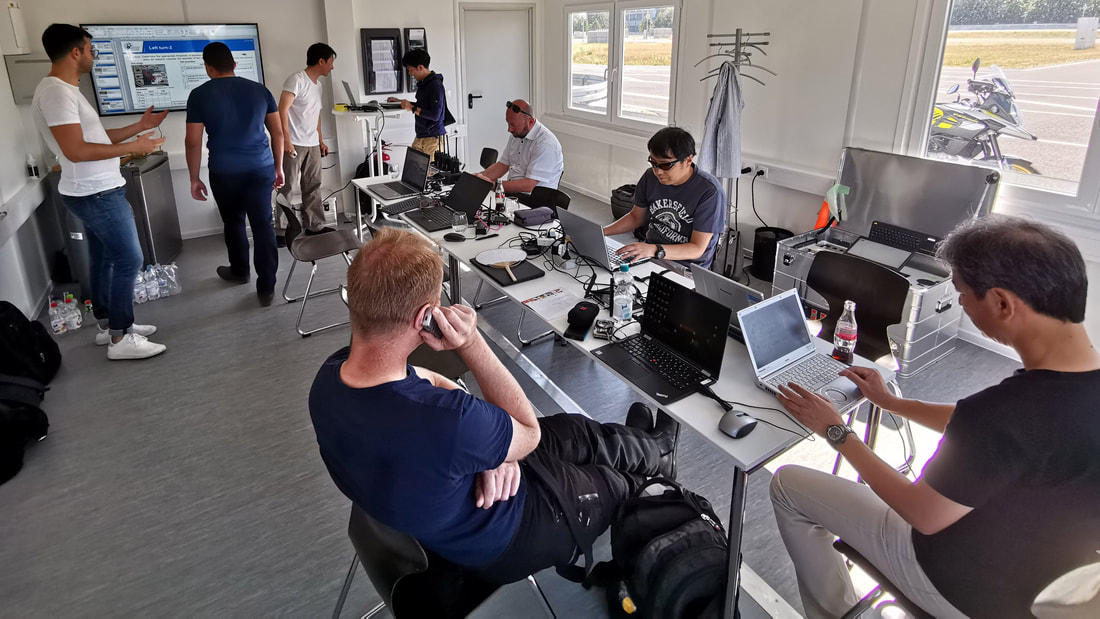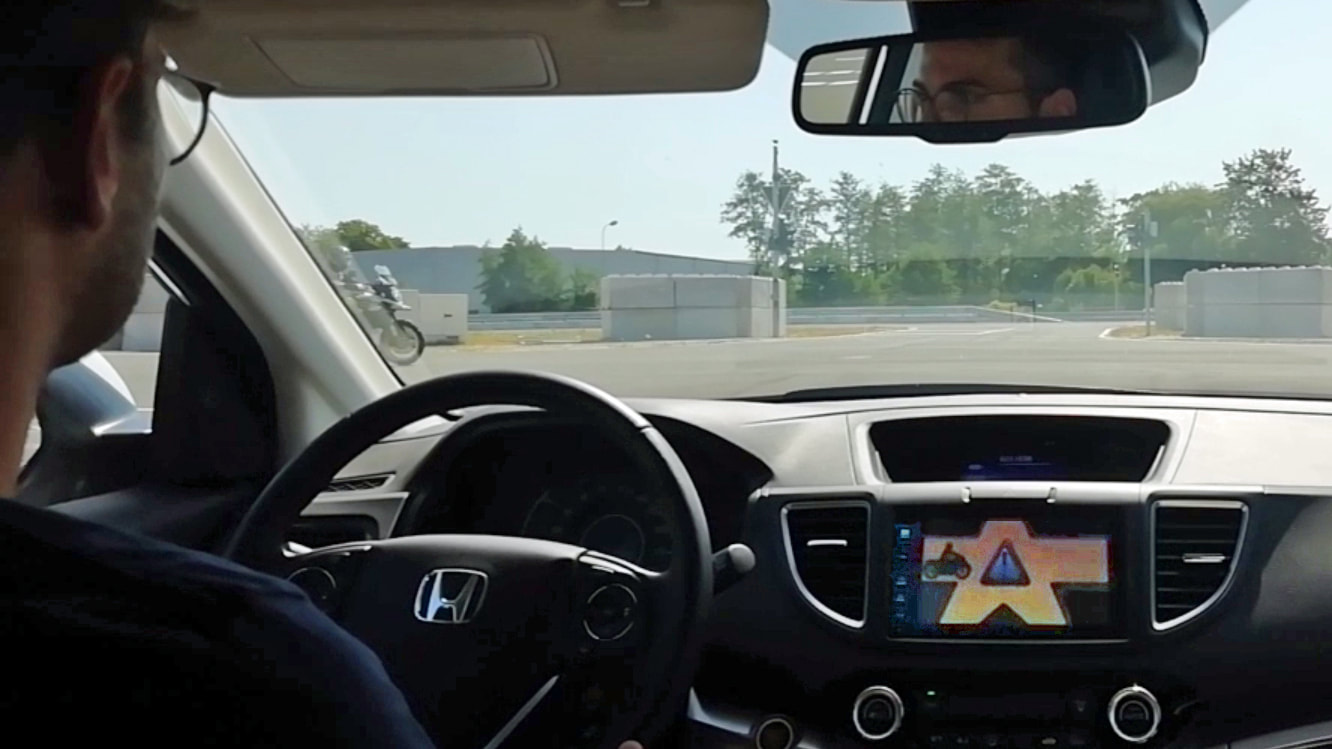|
Over the summer CMC performed a comprehensive test of a number of important C-ITS safety applications for motorcycles at the Aldenhoven Testing Ground near Aachen/Germany. The purpose of the test was to evaluate possible accident scenarios between a motorcycle and a car and to check the system settings in order to best inform the driver and rider how to mitigate dangerous situations. Motorcycle approaching information is a key safety feature A typical situation that motorcyclists experience is when a car approaches from a side road on to the main road where the motorcyclist has priority. It can often happen that the car driver slows down but doesn’t completely stop his vehicle. In which case the motorcyclist is unsure, if the car driver has seen/recognised him and the question is whether the rider should brake, and possibly risk another dangerous situation for vehicles following him? To help avoid such critical situations, the motorcycle and car communicate to each other and the car driver receives an indication/warning message to watch out for the motorcycle on the priority road. In order to make this happen, cars and motorcycles have to exchange standardized messages, called CAM and DENM messages which includes comprehensive set of information about vehicle status, such as speed, direction and/or the braking situation. To enable this communication to take place, CMC specialists have programmed software and tested it in laboratories. Verification however needs to be done in ‘real world’ scenarios and the Aldenhoven testing ground provides perfect surroundings with a variety of road layouts to check the systems. Warning timing is crucial The precise time when actually to warn the vehicle users is a highly important factor. In other words, when has the motorcycle rider or car driver passed a critical threshold and when is it required to show the warning in both the motorcycle and the car? If warnings come too early, confidence and acceptance of the system will be undermined. If a warning comes too late, everyone can imagine the consequences! CMC tested several scenarios over a number of speeds to validate the assumptions made in the laboratory. Calibrations to the systems were done on the spot and setups were improved during the testing sessions. EEBL – brake light indication very useful The so called EEBL (Electronic Emergency Brake Light) application was also tested in Aldenhoven and proved being very useful. With this system, the motorcycle rider receives information on the dashboard when another vehicle is undergoing hard braking and this is particularly useful if there is no direct line of sight, for example if a truck is between the braking vehicle and the motorcycle. This way the rider can be warned earlier, to avoid rear end collisions. CMC added important fine tuning to the algorithms being developed and optimized the best suitable timing for the warning to be issued to the motorcycle rider. Comments are closed.
|
Archives
May 2024
|
COPYRIGHT 2024 Connected Motorcycle ConsortiumContact Us |
|




 RSS Feed
RSS Feed